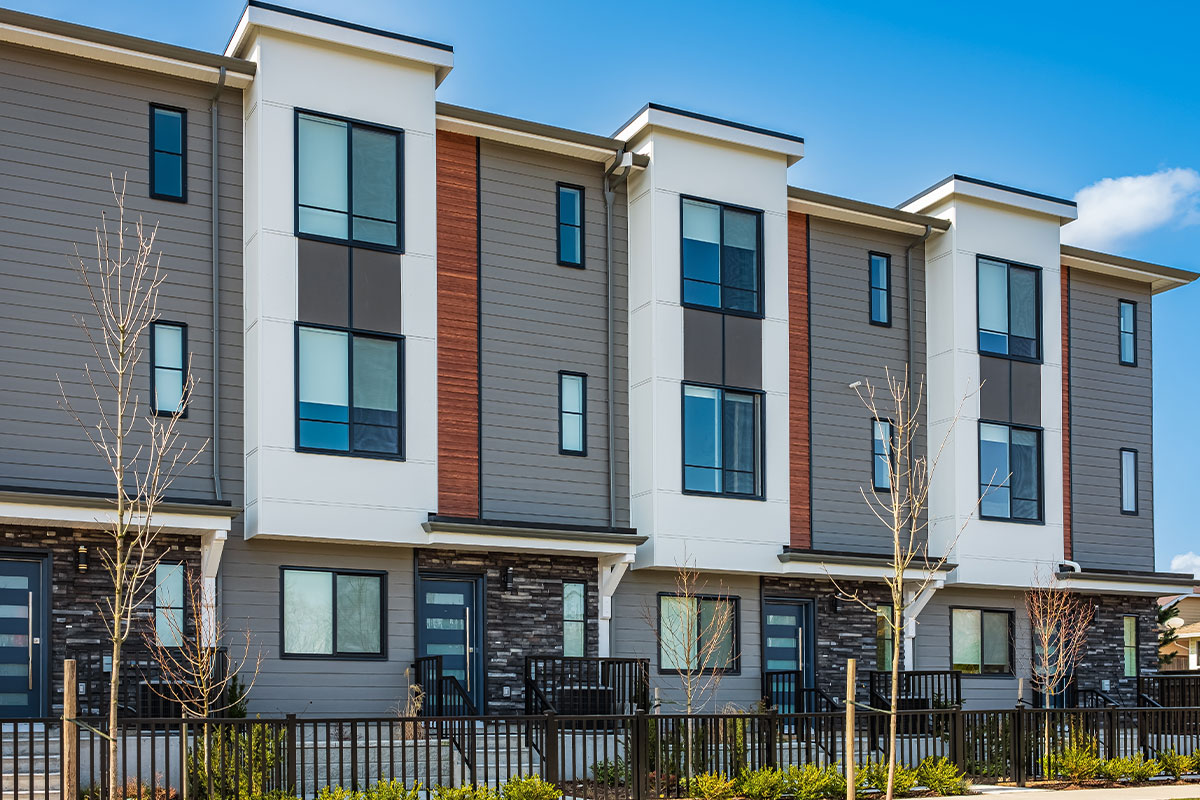In a recent discussion with more than one hundred city managers around Colorado, I explored the potential of public-private partnerships (P3s) in addressing workforce housing needs. Many communities are grappling with acute housing shortages, particularly middle-income households (typically those making 60% to 120% of area median income, such as teachers, entry-level professionals, and first responders).
Here, I summarize key insights from this discussion, focusing on the “sweet spot” for P3 housing projects in terms of size and procurement approach.
Why a P3?
The ideal P3 project leverages the strengths of both public and private sectors. Usually, they are structured so risks such as construction delays, cost overruns, and regulatory changes are allocated to the sector best able to address them. For example, in the most classic P3 model, the private side leads a facility’s design, construction, financing, operation, and maintenance.
Municipalities usually start exploring P3 options when projects feature one or more of these characteristics:
- Funding is insufficient: The project requires more funding than is available from public sources.
- Urgency: The project is urgently needed in the community.
- Risk sharing: The project involves significant financial, operational, or market-related risks that can be shared with a private partner.
- Revenue generation: The project generates revenue, such as tenant rents, that can be used to pay debt service, compensate the private partner, and/or be leveraged to create more projects.
What kind of P3 project works for housing?
Different P3 models vary in the level of private involvement and risk transfer. Here’s a rank-ordered list of procurement models from maximum to minimum private involvement.
- Design-Build-Finance-Operate-Maintain (DBFOM). The private party designs, builds, finances, operates, and maintains the project and the municipality repays all of these costs over time either through a revenue share or periodic availability payments based on performance.
- Design-Build-Operate-Maintain (DBOM). The private party designs, builds, operates, and maintains the project and the municipality finances the project, typically using low-cost tax-exempt municipal bonds.
- Design-Build Finance (DBF). The private sector designs, builds, and finances the project, turning it over to the municipality upon completion.
- Design-Build (DB). The private sector designs and builds the project. The local government finances, operates, and maintains the asset.
- Design-Bid-Build (DBB). The most classic public procurement model where the municipality designs the project, solicits bids for construction, and, generally speaking, the lowest bid wins the contract. Notably, this procurement model tends to have the least amount of cost efficiencies.
At the top is the classic P3 approach, which maximizes private involvement, risk transfer, and cost efficiencies to the private entity. As one works down the list, the level of private involvement (and risk) drops.
While the DBFOM model is successful in large infrastructure projects, it often doesn’t fit the scale of most community housing projects, which typically require at least 250-300 housing units to be economically viable. Therefore, the DBOM approach, where the public entity retains financing responsibilities, is often more suitable for housing projects.
The DBOM approach
A DBOM model may work better than DBFOM for workforce housing solutions for several key reasons, including:
- Lower cost of capital
- DBOM: The public sector retains responsibility for financing, often allowing access to cheaper capital through municipal bonds or other public financing options, thus reducing the overall cost of the project.
- DBFOM: The private sector finances the project, typically at higher interest rate than tax-exempt municipal bonds, which can increase the overall project cost.
- Risk management
- DBOM: While the public sector retains some financial risk, it can leverage its creditworthiness and access to lower-cost capital to manage these risks more effectively.
- DBFOM: Shifts more financial risk to the private sector, which might demand higher returns to compensate for this risk, potentially increasing costs (and the amount the local government will repay the developer).
- Transparency and accountability
- DBOM: Municipal bond financings often come with greater transparency and accountability requirements, which can enhance public trust and ensure the project meets public sector standards.
- DBFOM: Private financing can sometimes reduce transparency and accountability, as private entities may not be subject to the same scrutiny as public agencies.
All told, a DBOM model may work better for many middle-income housing projects because the public sector can leverage its financing advantages, maintain greater control and oversight, and ensure better alignment with community needs, goals, and transparency requirements.
A potential sweet spot
We believe the following project profile is an ideal candidate for a DBOM P3 approach because it would be financially viable and attract a sufficient number of developers to bid on the project.
- Number of units: 250+
- Most developers are looking for economies of scale and revenue generation because it helps ensure the project is financially viable.
- Unit size and mix: Market-driven; typically, studio – 3 bedroom
- A mix of unit sizes caters to a diverse range of households, enhancing market appeal and occupancy rates.
- Affordability levels: Middle income
- Aside from addressing a crucial gap in the housing market, middle-income tenants typically have more stable incomes compared to lower-income households, reducing the risk of rental defaults and helping ensure consistent revenue streams.
- Location and site selection: Level / flat already identified
- This reduces site preparation costs and simplifies the construction process, which can accelerate the project timeline and minimize unforeseen expenses.
- Design and amenities: Unique to market
- High-quality design and desirable amenities (e.g. fitness centers, communal spaces, green areas) enhance tenant satisfaction and retention.
- Financing/Funding sources: Project specific
- Basically, a tailored financial solution to meet each project’s unique needs, which can include a mix of public funds, private investments, grants, and tax incentives.
Of course, as with any P3 project, success hinges on developing clear objectives, allocating risk appropriately, ensuring financial viability, and emphasizing community engagement. This also doesn’t mean a smaller project couldn’t be done as a DBOM P3 (of course it could). However, by meeting these criteria, a middle-income housing project becomes a viable and attractive solution for addressing workforce housing needs, benefitting both the community and private partners involved.
Learn more about how UMB Bank, n.a. Public Finance, can support your organization’s financing and capital needs, or contact us to be connected with a public finance specialist.
This communication is provided for informational purposes only and is (1) not an offer or solicitation for the purchase or sale of any financial instrument; (2) not a solicitation to participate in any trading strategy; (3) not an official confirmation of any transaction; and (4) not a recommendation of action to a municipal entity or obligated person and does not otherwise providing municipal advisor advice. The opinions expressed in the communications are those of the author and do not necessarily represent the opinions of UMB Bank, n.a., UMB Financial Services, Inc., or UMB Financial Corporation (Combined hereafter in this disclosure as “UMB”). The communication is based upon information available at the time of publication and is believed to be reliable, but UMB does not warrant its completeness or accuracy, and it is subject to change at any time without notice. UMB is not liable for any errors, omissions, or misstatements. You should discuss any information and material contained in this communication with any and all internal or external advisors or other professionals that are deemed appropriate before acting on this information.
UMB Bank, n.a. Capital Markets Division is a separately identifiable division of UMB Bank, n.a. UMB Bank, n.a. is an affiliate within UMB Financial Corporation. UMB Financial Services, Inc., Member FINRA, SIPC, is a wholly owned subsidiary of UMB Financial Corporation, and an affiliate of UMB Bank, n.a.
Products, Services and Securities offered through UMB Bank, n.a. Capital Markets Division and UMB Financial Services, Inc. are: NOT FDIC INSURED | MAY LOSE VALUE | NOT BANK GUARANTEED





